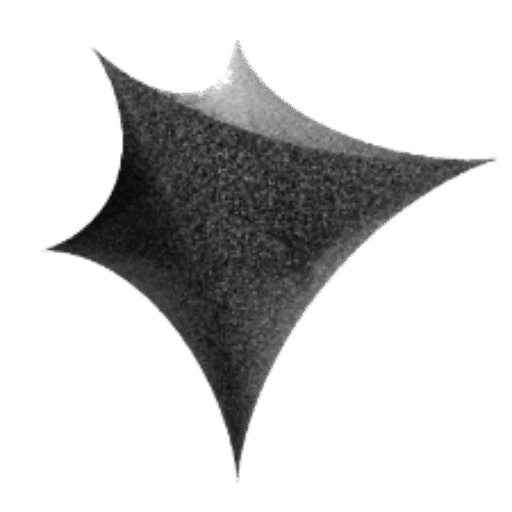Alcalde, I. (17 de junio de 2020). ¿Ha muerto la Smart City? Algo ha sucedido en Toronto. Paisaje Transversal.https://paisajetransversal.org/2020/06/muerte-smart-city-toronto/
Alexander, C. y Eisenman, P. (2004). Contrasting concepts of harmony in architecture. Katarxis, (3). http://www.katarxis3.com/Alexander_Eisenman_Debate.htm
Alexander, C. y Manheim, M. (1962). The Use of Diagrams in Highway Route Location: An Experiment. Research Report RR-R62-3. Department of Civil Engineering. MIT.
Alexander, C. (2003). The Nature of Order. An Essay on the Art of Building and the Nature of the Universe. Oxford University Press.
Alonso, R. (2017). Hacia una arquitectura abierta. Historia conceptual y política del ideal de apertura en la arquitectura (1915-2015). UMA.
Ampère, A. M. (1834). Essay on the Philosophy of Science. ALS Regarding.
Bateson, G. (1972). Steps to an ecology of mind. Jason Aronson.
Benjamin, W. (1986). Reflections: Essays, Aphorisms, Autobiographical Writings. Schocken.
Callon, M. y Latour, B. (1981). Unscrewing the big Leviathan: or how actors macro-structure reality and how sociologists help them to do so? En A. V. Cicourel y K. Knoor-Cetina (Eds.), Advances in social theory and methodology: Towards an integration of micro -and macro-sociologies. Routledge.
Capitel, A. (2005). La metamorfosis de la arquitectura contemporánea. Pensamiento y acción: ¿hacia una nueva «muerte» de la arquitectura? Arquitectura: Revista del Colegio Oficial de Arquitectos de Madrid (COAM), (339), 62-71.
Castro, E. (2011). Mallas de protección: La codificación del yo en la era comunicativa. En AA. VV., Red-acciones,Caslon.
Castro, E. (2020). Ética, estética y política. Arpa.
Castro, O. (2009). Jakob von Uexküll. El concepto de Umwelt y el origen de la biosemiótica (M.Phil. Thesis -DEA).
Comité Invisible (2001). La hipótesis cibernética. TIQQUN, (2).
Comité Invisible (2014). Fuck Off Google.
Derrida, J. (1967). De la gramatología. Siglo XXI.
Harvey, D. (1973). Urbanismo y desigualdad social. Siglo XXI.
Heidegger, M. (1951). Construir, habitar, pensar. Oficina de Arte y Ediciones.
Heidegger, M. (2000). El final de la filosofía y la tarea del pensar. En Tiempo y Ser. Tecnos (Trabajo original publicado en 1966).
Hillier, B. y Hanson, J. (1984). The social logic of space. Cambridge University Press.
Himanen, P. (2011). La ética del hacker y el espíritu de la era de la información. Destino.
Husserl, E. (1900-1901). Logische Untersuchungen. Veit.
Jacobs, J. (2011). Muerte y vida de las grandes ciudades. Capitan Swing (Trabajo original publicado en 1961).
Jencks, C. (1997). Nonlinear Architecture: New Science = New Architecture? Architectural Design, (129).
Massey, D. (1993). Power-geometry and a progressive sense of place. En J. Bird, B. Curtis, T. Putnam y L. Tickner (Eds.), Mapping the Futures: Local Cultures, Global Change. Routledge.
Massey, D. (2012). Un sentido global de lugar. Icaria.
Mera, D. (2024). El giro testimonial en las comisiones de la verdad y la reconciliación. Agora: Papeles de Filosofía,43(1).
Pask, G. (1969). The Architectural Relevance of Cybernetics. Architectural Design, (7/6), 494-496.
Quesada, F. (2016). El giro espacial. Conquista y fetiche. Revista Europea de Investigación en Arquitectura, (05), 153-170.
Sfez, L. (1992). Crítica de la comunicación. Amorrortou (Trabajo original publicado en 1988).
Shannon, C. (1948). A mathematical theory of communication. The Bell System Technical Journal, 27(3), 379-423.
Sloterdijk, P. (2008). Normas para el parque humano, una respuesta a la Carta sobre el humanismo. Siruela.
Von Uexküll, J. (1931). Die Rolle des Subjekts in der Biologie. Die Naturwissenschaften, 19(19), 385–391.
Wark, M. (2021). El capitalismo ha muerto. El ascenso de la clase vectorialista. Holobionte.
Weizman, E. (2020). Arquitectura forense: violencia en el umbral de detectabilidad. Zone Books. Open Verification.
Wiener, N. (1948). Cybernetics or control and communication in the animal and the machine. John Wiley.
Wiener, N. (1988). The Human Use Of Human Beings: Cybernetics And Society. Free Association Books.
